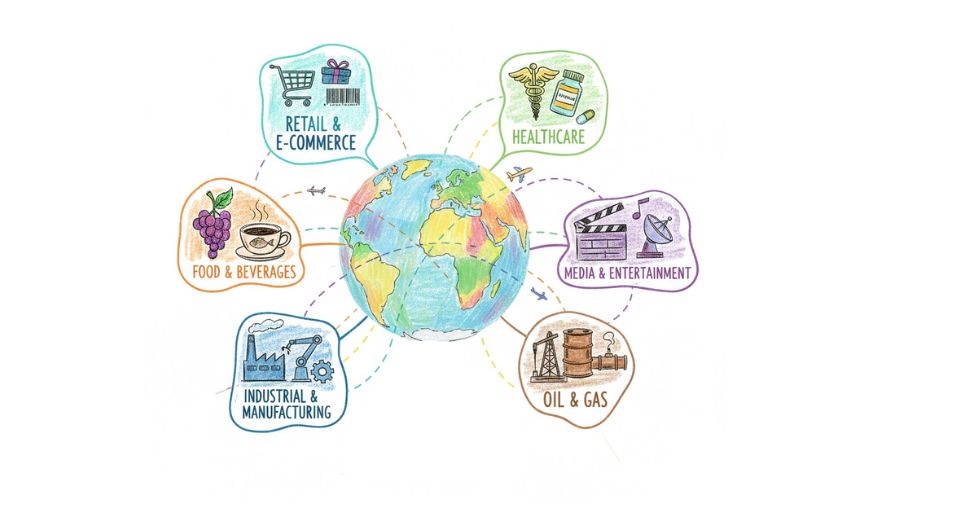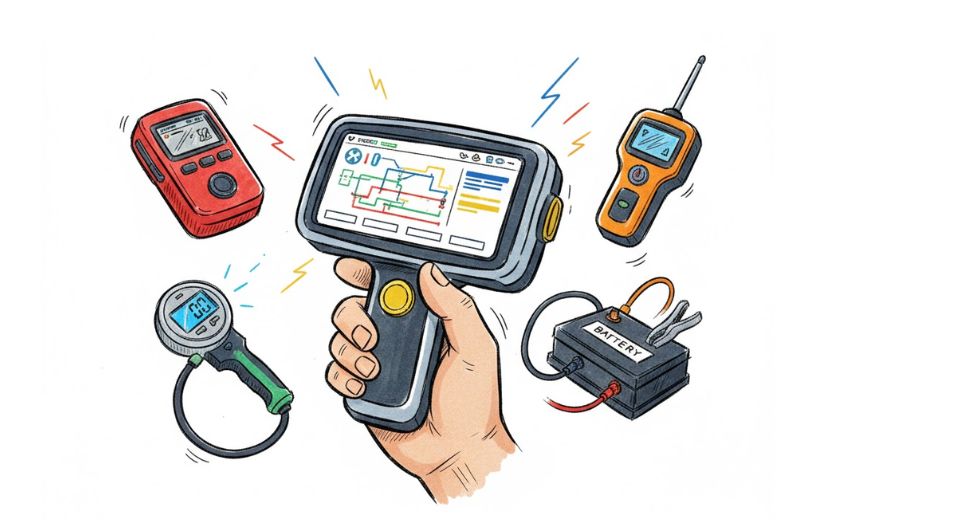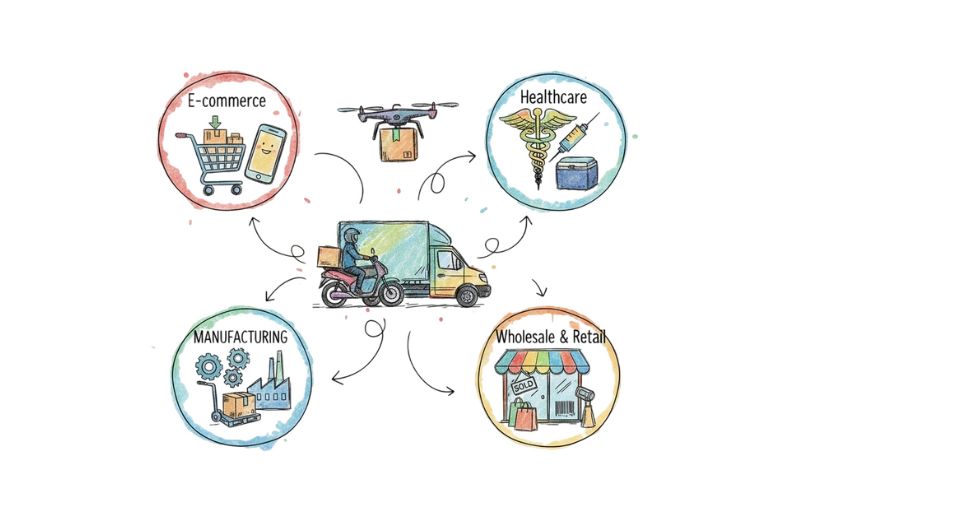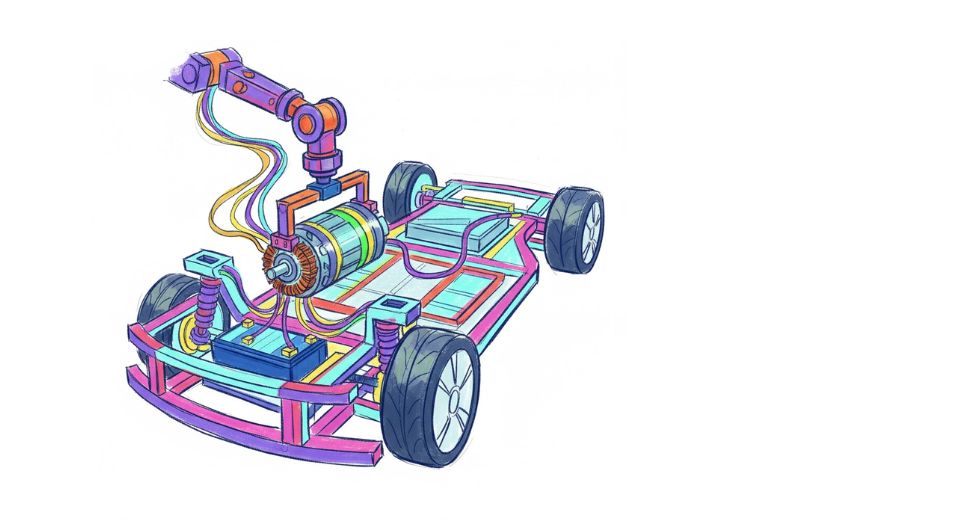MARKET OVERVIEW
The Global Automotive Airbag market is highly significant for the automobile industry and is contributing toward passenger safety with considerably high advancements in restraint systems. As cars continue to accept further and more enhanced technologies for protection, airbags will remain a critical part in reducing impacts in collisions. Airbags are designed to cushion collisions by deploying within milliseconds following a crash. This acts as a significant safety mechanism to reduce injuries to drivers and passengers. Toward this aim, advancements in this market will be ongoing because manufacturers will be designing new airbag systems that are in line with changing vehicle designs and regulations.
The Global Automotive Airbag market will keep evolving to conform to safety regulations, which keep becoming tighter with every passing place, whilst new materials and sensor technologies get incorporated. The focus of automakers will now shift to the airbag development, which is even more proficient in real-time adaptability to a variety of crash situations. Protection enhancement of such airbags shall be expelled to gain importance in the market now extending above frontal and side-impact and curtain-lying airbags and enhancing protection across the whole range of seat positions. The rest will be including other smart ones that will deploy differently depending on occupant size, position, and collision severity, thus completing the measures for further safety.
The Global Automotive Airbag market will be affected by the integration of airbags within all categories of vehicles, passenger cars, and commercial fleets-intelligent and otherwise. Together with costs, the developing concepts of manufacturers around airbag optimization will also incorporate performance enhancement suitable for different vehicle segments. The evolving automobile design will also tend toward light weight to achieve fuel efficiency and therefore match with the safety and operational characteristics of the airbag systems that use modern materials able to accommodate such designs.
The upsurge in active crash detection technologies and improvement of sensor systems will now direct increased functionalities of airbags in coming times. The improved sensors being offered shall be tracing the collision parameters of the Global Automotive Airbag market closely and accurately, thus improving the chances of timely and effective deployment of the airbags. Later on, such functions will be enhanced by artificial intelligence and predictive analytics, which would change in real time according to the driving state and possible crash condition. Such innovations will further refine safety mechanisms by avoiding unnecessary deployments while ensuring timely deployment along with the desired action of the airbags when needed.
In particular, the autonomous vehicle revolution will demand the development of specialized restraint systems, programmed for unique seating arrangements, along with driving environments for such vehicles. New methodologies need to be adopted by which airbag systems are placed and deployed within the car, as autonomous driving technologies will change the way passengers are positioned in cars. All this necessitates intensive research in airbags solutions to improve protection in unique crash scenarios identified for them. Adaptability will form the basis of airbag engineering in future.
As in the past, airbag technology will be driven by such legislations, which demand stricter safety measures for a wider reach in airbags among vehicle classes. It is also expected to flow into their converging policies regarding a crash-test rating or certification of safety. With safety in emphasis, automakers categorize their innovations and schemes for production. At present, the Global Automotive Airbag market promises to develop resources and innovative technologies that would increase occupant protection and reduce fatalities in traffic incidents as governments increasingly adopt road safety initiatives.
The Global Automotive Airbag market will continue to maintain its position as one of the cornerstones of safety in a vehicle due to the continuous advancement of materials, sensors, and vehicle designs. The development of airbag systems will see collaborative efforts from automakers, technology developers, and regulatory bodies to ensure that future vehicles provide maximum protection for occupants under diverse driving conditions.
Global Automotive Airbag market is estimated to reach $62,822 Million by 2032; growing at a CAGR of 8.1% from 2025 to 2032.

GROWTH FACTORS
The Global Automotive Airbag Market is slated to boom in the years to come due to various factors transforming the automotive industry. Most importantly, on increasing installation of airbags, this factor is linked to stringent safety norms that have made it mandatory, in countries, to equip vehicles with airbags. By these criteria, laws and guidelines worldwide have been recognizing the importance of airbags as an essential safety feature since they have proven to prevent many casualties and injuries in accidents. Thus, to comply with these regulations, automakers increase the airbag on installation across the various categories of vehicles. Moreover, increasing awareness over safety among consumers has made buyers more inclined towards those available with the advanced safety features within the automobiles, and hence consumers should ensure that safety considerations made have been improved, which thereby makes them integrate airbag feature systems.
Market uplift may become slow because of certain challenges. Among them, costs involved in using sophisticated airbag systems are one of the majors. The installation and developing advanced systems require a very high amount of capital investment and proves to be a big burden on manufacturers dealing with price-sensitive markets. Moreover, reliability is still a concern regarding airbags. Incidents related to airbag malfunction, either through non-deployment or accidental deployment, have seen the automakers go for recalls and liability clauses. Such incidents cause safety hazards and affect the trust of consumers in the brand and make it imperative for manufacturers to have maximum reliability in their airbag systems.
This leads us to the fact that the future certainly holds opportunities in terms of promising growth for the Global Automotive Airbag Market. Advancement in technology is heralding the day when airbags will take drastically new forms beyond conventional ideas. These features are multi-stage airbags deploying at a different force depending on the severity of the crash. Another emerging safety feature is pedestrian protection airbags, which reduce the likelihood of injuries from pedestrian collisions. Therefore, it not only improves passenger safety but also allows manufacturers to comply with rapidly changing safety norms.
With the growing automotive technology and innovations, the demand for intelligent airbag systems will increase. Airbags may become more responsive and adaptive due to the growing integration of sensors and artificial intelligence in cars. This way, airbags may aim to activate up to a more accurate anticipation of crashes, developing the airbag that deploys in a way to maximize protection according to the severity of the impact. The future ahead for the Global Automotive Airbag Market holds much promise and practice in terms of both challenges and opportunities.
MARKET SEGMENTATION
By Type
There is a paradigm shift in the airbag industry due for huge transformation because of continuous advancement in the vehicle safety technology. Airbags constitute an integral element toward protecting passengers during accidents, development of which over the years stands as testimony toward the automotive industry's efforts to conserving injuries and fatalities on the road. Manufacturers are increasingly focused on the integration of smarter airbag systems to meet different impact scenarios, thus creating safer vehicles overall.
Front airbags have long been used in vehicles, deployed to protect the occupants against striking any interior parts like the steering wheel or dashboard when there is a significant head-on impact. Front airbags have been promoted primarily through a regulatory mandate and their successful track record in preventing fatalities extending to serious injuries in head-on collisions. There will remain emphasis on front airbags in different vehicle categories, as safety norms are becoming stricter across the globe, for these to remain essentially standard in all automobile types.
Knee airbags are a new yet developing member of this increasingly large family. They are installed underneath the dashboard and will deploy during frontal collisions to protect the lower extremities of the occupants. Knee airbags help reduce injury to the knees and femurs by distributing impact forces much more evenly across the entire leg. The growing concern for occupant protection systems has seen knee airbags being included more in premium and mid-range vehicles.
The side airbags that protect passengers in side impact collisions are now becoming more crucial. These airbags are installed in the seat or door panels, providing cushioning for the torso and pelvis, thereby markedly reducing the risk of severe injury during lateral crashes. There is an increasing need for side airbags since consumers are more aware of vehicle safety features, thus compelling manufacturers to provide side airbags to a greater extent across more models.
Considered to be head protection, curtain, or head curtains, deploys from the roof rail to protect occupants' heads from side impacts and rollover accidents. It has an important role in preventing traumatic brain injury and is now a generic safety feature. Recent trends indicate a broader market for curtain airbags as increasing rollover protection and occupant safety remain the focus in multi-passenger vehicles.
The airbag market is undergoing considerable change thanks to advanced technology. New designs, such as adaptive airbag systems, adjust deployment to the severity of a given crash and the seating position of the occupant, emphasizing the performance of that safety device. Moreover, developing pedestrian protection airbags that deploy externally to lessen pedestrian injury in case of collisions shows a commitment toward all road users' safety.
By Vehicle Type
The last few decades have seen substantial growth in the worldwide automobile airbag industry. It was basically brought about by increased awareness of vehicle safety, alongside the compliance of strict guidelines and regulations within national territories and at a global level. Going forward, it will be wise to explore how different vehicle types, such as passenger vehicles, commercial vehicles, and electric vehicles, are creating and will continue to create markets around airbags.
Traditionally, passenger vehicles have been leaders in airbag adoption. This is because of increased demand from consumers for safety features and the rigorous safety standards that most parts of the world have instituted. They have paid attention to the integration of most progressive airbag systems, including front, side, curtain, and knee airbags, into the passenger cars that they produce to ensure maximized occupant protection, compliant with regulatory requirements and consumer expectations.
Light commercial vehicles (LCVs) and heavy commercial vehicles (HCVs) are the next emerging and fast-growing segments in the airbag market. The CAGR of commercial vehicles is approximately projected at about 15%. The airbag market is expected to post significant growth in the coming forecast period of 2024-2029. The growth is mainly contributed by the increasing investments in the construction industry, public transport, and developing road freight. Governments all across the globe are framing the laws for stricter safety standards for trucks, buses, and other commercial transport vehicles. The need to protect drivers and passengers alike has mandated that action be taken on the recognition of vehicles as being commercial transport.
Electric vehicles (EVs) have turned the industry upside down and will do so again by bringing special factors for airbag markets. As the world increasingly adopts EVs, car manufacturers are changing their airbag systems to cater to the specific structural and design characteristics that these vehicles have. For example, because of the absence of a conventional internal combustion engine, EVs allow for many interior designs that can influence airbag placement and deployment strategies. Moreover, compared to traditional vehicles, heavy battery packs in EVs change the weight distribution of the vehicle, forcing the recalibration of safety systems to achieve optimal protection. In addition, manufacturers are investigating sustainable materials that will be used for airbags in line with the environmentally friendly spirit of electric mobility.
The integration of advanced technologies such as autonomous driving systems will further use these automotive airbags across all vehicle types in the future. As vehicles become more autonomous, the nature of passenger interaction within the cabin will evolve, potentially leading to new seating arrangements and, consequently, novel airbag deployment configurations.
By Fabric
The airbag industry is on the verge of significant transformation, more specifically with regard to the airbag materials development. The core of this transformation is the coated versus non-coated fabrics selection, with their varied advantages impacting their different applications in vehicles.
Coated fabrics are neoprene-coated or coated with silicone. These boast great durability and resistance to environmental rigors. Neoprene-coated textiles, for example, are resistant to chemicals, oils, and extreme temperatures; in other words, they offer totally different protective envelope characteristics for the airbag materials extending their durability life. Similarly, silicone-coated fabrics are loved for features such as high-temperature resistance and flexibility. Their non-stick properties ensure that airbags work freely and well in deployment even under high-temperature conditions. Thus, coated fabrics are particularly useful in vehicles that are in harsh environments or demand high safety.
The alternative, namely uncoated fabrics, provides weight-reduction and breathability advantages. Such fabrics are naturally lighter, thus eroding some weight in the final product—the vehicle. This factor is paramount in fuel economy considerations and emission reductions. Moreover, the softer and flexible nature of uncoated fabrics allows for pioneering airbag designs that can easily be integrated into any given vehicle interior. As automakers try to sandwich safety, performance, and ecology, uncoated fabrics provide pertinent solutions.
Moving on, smart fabrics fitted with sensor would be the next great thing in airbags. With these new-age materials, the airbag system could respond faster by instating more accurate and adaptable deployments, hence safeguarding passengers during a collision. In its pursuit of sustainability, eco-friendly airbag fabrics, now under research, will find to fit the bill as being recyclable and possessing minimal environmental consequences, merging into the broader global automotive commitment to ecology.
In the meantime, advancements in coating technologies are in progress and are intended to enhance airbag fabrics' performance and durability. The bottom line is that these coatings will allow the airbag system to survive longer while providing suitable tear and abrasion resistance against environmental exposure and demanding driving conditions. Lightweight materials are being developed to facilitate work on fuel efficiency and decreasing emissions in concert with coating materials because the manufacturers are embracing composite materials and advanced textiles that afford the performance requirements of strength and safety while aiding weight savings.
The decision on which coated and uncoated fabrics will ultimately be used will depend upon various car and airbag design considerations, including type of vehicle, purpose for which it is being employed, and local safety legislation.
By Material
Today, the Global Automotive Airbag market continues to evolve in tandem with safety standards and consumer expectations, pushing manufacturers toward developing more advanced, complex, and reliable airbag systems. Manufacturers tend to source materials that give advent for improving road safety concerns, such as better performance of airbags, durability, and costing. The materials used for production of airbags are pivotal to the function of the airbag, speed of deployment, and passenger safety during a collision as a whole.
Polyester fiber is, perhaps, one of the most prominent materials. This is highly valued because of its strength, lightweight properties, and resistance to environmental factors. They remain undamaged over time and can be used easily. Also, it's resistant to moisture and temperature changes, which are important for the efficiency of airbags that experience different climates. Using polyester fiber, further innovations are expected as manufacturers progress towards thinner and more flexible airbags.
The other famous is nylon, famous for its separation flexibility with tear resistance. nylon airbags have generally remained as a latecomer because they could withstand high forces on impact but maintain their structure. It deploys the airbag effectively within milliseconds and thus lessens risk for the occupants. This improvement for developing high-performance nylon types has led improved strength and reduced elasticity for better airbag expansion during deployment. Companies experiment on coatings and properties to improve heat resistance with the objective that nylon airbags will still function well even under extreme conditions.
Beyond polyester fiber and nylon, other materials are being found to add performance to the airbag. Technological innovations in fabrics have given rise to hybrid materials combining various kinds of fibers for the best results. These would thus be an improvement in breathability, heat resistance, and durability. Following the sustainability drive in automobiles, eco-friendly, less harmful alternatives are also under research. It is even possible that future materials supplied for safety would be biodegradable or recycled yet maintain the same level of protection as traditional fabrics.
With time, as automobiles keep getting safer, the material type will remain one of the key areas for development of airbags. New technology and engineering that change the world will likely be aimed at smart airbags adapting to the kind of impact and the position of passengers when they deploy. The Global Automotive Airbag market is also highly placed for further research into advanced materials that are capable of keeping vehicles safe. comfort and efficiency were engineered to be lightweight and of high strength fabrics; thus, they will give direction to the future of airbags have.
|
Forecast Period |
2025-2032 |
|
Market Size in 2025 |
$42,368 million |
|
Market Size by 2032 |
$62,822 Million |
|
Growth Rate from 2025 to 2032 |
8.1% |
|
Base Year |
2024 |
|
Regions Covered |
North America, Europe, Asia-Pacific, South America, Middle East & Africa |
REGIONAL ANALYSIS
Various factors at play across regions around the world have contributed to the growth of the global automotive airbag market. In North America, stringent safety regulations have historically mandated the installation of airbags in vehicles all passenger cars have had to be equipped with front airbags. There has been a broad acceptance of airbags since then. The increasing popularity of electric vehicles has prompted a newer demand for state-of-the-art airbag systems designed for new vehicle designs.
In Europe, the avowal of safety is evidenced through the stringent sets of standards employed by various organizations such as the New Car Assessment Programme in Europe. High safety ratings often require multiple airbag types. Countries like Germany, France, and the UK, which boast powerhouse automotive industries, have also contributed significantly to the adoption of advanced technologies for airbags. These nations strive to innovate in vehicle safety and protection features, including airbags, in efforts to reduce road fatalities.
The Asia-Pacific region offers the fastest growth of all in the automotive airbag sector. Countries such as China, India, and Japan emerge as leaders in the production of vehicles and continue to raise people's awareness on safety features. Such legislation as that by India putting into effect on a mandate that requires six airbags in all passenger cars starting from 2024 made an incredible spike in the need for such features. Added to that, the major airbag manufacturers operating in Japan makes the region a potential core innovator in airbag technology.
In South America, increased sales of vehicles, owing to rising disposable incomes and a growing middle class, have pushed up airbag demand. Countries like Brazil and Argentina have developed much more rigorous safety regulations across the region, marking the same trend that can be seen worldwide.
Gradually, the Middle East & African region is also increasing the number of airbags in vehicles. The recent regulatory changes in Gulf Cooperation Council countries, such as Saudi Arabia and the UAE, have imposed stricter safety laws, which lead to more inclusion of airbags in new vehicles. Also, economic growth and rising awareness would add to this upward trend.
To sum up, it can be said that the automotive airbag market has currently become more of a global market owing to the above-mentioned factors as various regional rules, consumer awareness, and new technology in vehicle production influence this market. While safety increasingly becomes the main paramount reason for great safety of innovative airbag systems, more demand will increase in this area within each region.

COMPETITIVE PLAYERS
Accelerated technological innovation coupled with heightened passenger concern over safety is propelling the evolution of the entire automotive airbag industry. Leading firms are the main players in this scenario as they innovate solutions and spread their wings across territories.
Autoliv is a Swedish American automotive safety behemoth that began operating in 1953. Autoliv engages itself in the production of airbags, seat belts, and steering wheels, and like the rest, has remained afloat in the industry. Speculations said that the company would report profits for the third quarter of 2021 at par with expectations having been hit by a mix of supply chain disruptions and fluctuations in vehicle production. MD/CEO, Mikael Bratt said that this has been realized by good cost control measures, including downsizing the workforce.
Joyson Safety Systems is a long-standing company that dates back to 1917 as Key Safety Systems. Its product portfolio includes comprehensive safety products, such as airbags and steering wheels. Joyson Safety Systems is growing steadily, currently buoyed by the large automotive markets.
With the acquisition by TRW Automotive in 2015, ZF Friedrichshafen AG emerged to be a prominent name in automotive safety systems. The robust company provides a complete range of technologies from airbag systems to occupant safety solutions. A major development by ZF in June 2024 was an airbag to improve safety in automated driving situations. Such innovations are indicative of ZF's commitment to providing future oriented products.
Toyoda Gosei was incorporated in 1949, establishing itself as a manufacturer of high-quality airbags and safety systems. Technological breakthroughs have taken the airbag market by storm. Toyoda Gosei, looking to meet rising demand for airbags due to stringent safety regulations, announced a new operation in Guangdong Province, China, in November 2023.
The company named Nihon Plast is based in Japan since 1971 and specializes in airbag modules, inflators, and safety belts. This company is credited with quality and innovations that have led to regular growth in the safety systems segment.
Established in 1977, Hyundai Mobis became a notable supplier in the airbag industry. In July 2024, the firm presents airbags specifically intended for application vehicles based on their interior designs.
Ashimori Industry Co., Ltd. has been in operation since 1930, with an emphasis on quality and continuous improvement driving it into the airbag marketplace.
Daicel Corporation is a Japanese chemical firm that has entered into the market of safety in the automobile industry as manufacturers of airbag inflators. The company's strengths have been its expertise in materials science, which has aided in developing safety components that can be relied on.
Aptiv Inc. is a company that is based in Ireland and is involved in advanced safety and experiences. It works on airbag products and works side by side automotive electronics for complimentary safety enhancement in the vehicle.
Continental AG is a German-based multinational that manufactures a salient range of automotive components, among which are airbag control units and sensors. Safety technology integration thus adds value to the total airbag system developed by this company.
Denso Corporation is a Japanese-based automotive, supplying technologies and components. The company has undertaken innovations in airbag systems under the commitment to the vehicle's safety in the overall perspective.
Bosch GmbH- Robert is, in turn, an engineering and technology company based in Germany. It provides a wide range of automotive safety systems, mostly concentrated on airbag technologies as the main focus out of a large number of improvements.
Valeo SA is a supplier in France involved in developing components, especially the safety systems. This involvement speaks volumes concerning airbag technology in relation to the end-products grounded on passenger protection.
Those companies finally draw a line between making the difference, with regards to whether airbag technology would completely change just like it has done. They've focused not only on innovation and quality, but safety too to meet differentiated evolving industry needs.
Automotive Airbag Market Key Segments:
By Type
- Front Airbag
- Knee Airbag
- Side Airbag
- Curtain Airbag
By Vehicle Type
- Passenger Vehicle
- Commercial Vehicle
- Electric Vehicle
By Fabric
- Coated
- Non-coated
By Material
- Polyester Fiber
- Nylon
- Others
Key Global Automotive Airbag Industry Players
- Autoliv
- Joyson Safety Systems
- ZF TRW
- Toyoda Gosei
- Nihon Plastic Company Co. Ltd.
- Ashimori
- Daicel Corporation
- Aptiv Inc.
- Continental AG
- Delphi Automotive
- Denso Corporation
- Hella GmbH & Co. KGaA
- INVISTA
- Robert Bosch GmbH
- Valeo SA
WHAT REPORT PROVIDES
- Full in-depth analysis of the parent Industry
- Important changes in market and its dynamics
- Segmentation details of the market
- Former, on-going, and projected market analysis in terms of volume and value
- Assessment of niche industry developments
- Market share analysis
- Key strategies of major players
- Emerging segments and regional growth potential











 US: +1 3023308252
US: +1 3023308252






